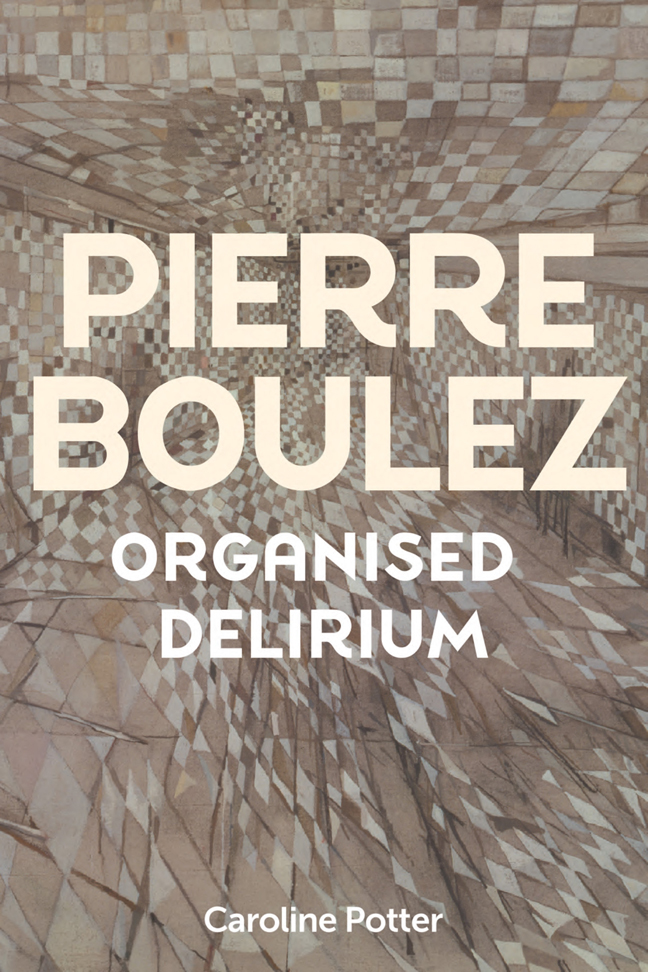Book contents
- Frontmatter
- Contents
- List of illustrations
- Acknowledgements
- Introduction: Organised Delirium
- 1 Surrealism in the 1930s and 40s
- 2 ‘A flayed lion’: Boulez as student
- 3 Serialism and surrealism: Boulez's instrumental music 1946–8
- 4 Fureur et mystère: the first versions of Boulez's René Char settings
- 5 The charm of numbers: continuing threads in Boulez's later music
- Select bibliography
- Index
4 - Fureur et mystère: the first versions of Boulez's René Char settings
Published online by Cambridge University Press: 21 February 2024
- Frontmatter
- Contents
- List of illustrations
- Acknowledgements
- Introduction: Organised Delirium
- 1 Surrealism in the 1930s and 40s
- 2 ‘A flayed lion’: Boulez as student
- 3 Serialism and surrealism: Boulez's instrumental music 1946–8
- 4 Fureur et mystère: the first versions of Boulez's René Char settings
- 5 The charm of numbers: continuing threads in Boulez's later music
- Select bibliography
- Index
Summary
Sometimes, discoveries which prove essential to your life take you unawares and take your breath away; they cause a definitive rupture, both required and desired at the very same time as they stab you. […] You might be staring inattentively at a newspaper and suddenly you recognise yourself; this blazing paragraph in front of you seems both to take you outside of yourself and to expand your capabilities, your grasp and your power beyond what you had previously imagined.
Boulez's Striking Statement, Published in the newspaper Libération in 1983, captures the extraordinary impact of René Char on his musical evolution. Elsewhere in this short article, written to celebrate the publication of Char's complete works, he uses metaphors of a bomb going off, of having one's very being shaken to the foundations, of a shock that ‘liberates an energy that is wild, joyful, drunk with its new existence. Of course, it's a young person's thing, it has to be!’ But while this youthful flash of discovery cannot last, its ramifications, writes Boulez, are profound:
Its presence can be felt everywhere and nowhere. The relationship is unwittingly transformed; there is this force at the centre of your own proliferation. No, it wasn't two narratives which were for a while superposed; no, it's not a transplant, not osmosis; no, it's not a carrier wave. Rather, it is a permanent transgression of limits and of substance.
However eloquently Boulez expresses himself, and however deeply felt this statement might be, its style is almost as remarkable as its substance. Writing about an artistic encounter which changed him profoundly and permanently, Boulez almost always narrates using the second rather than first person (‘beyond what you previously imagined’) and never once mentions Char by name. This combination of intensity of feeling and distancing is characteristic of Boulez's writing style when looking back on his heady formative years. And Gavin Thomas is surely right when he suggests that ‘one could almost believe that this is not Boulez speaking of Char, but Boulez speaking of Boulez’.
René Char's verse made a central and vital contribution to Boulez's artistic development. The early works explored so far are all for instrumental forces; Boulez had attempted to set poetry as a young composer, but these juvenilia remain unpublished and uncharacteristic of the musical style he would develop only a short time later.
- Type
- Chapter
- Information
- Pierre Boulez , pp. 129 - 160Publisher: Boydell & BrewerPrint publication year: 2024

